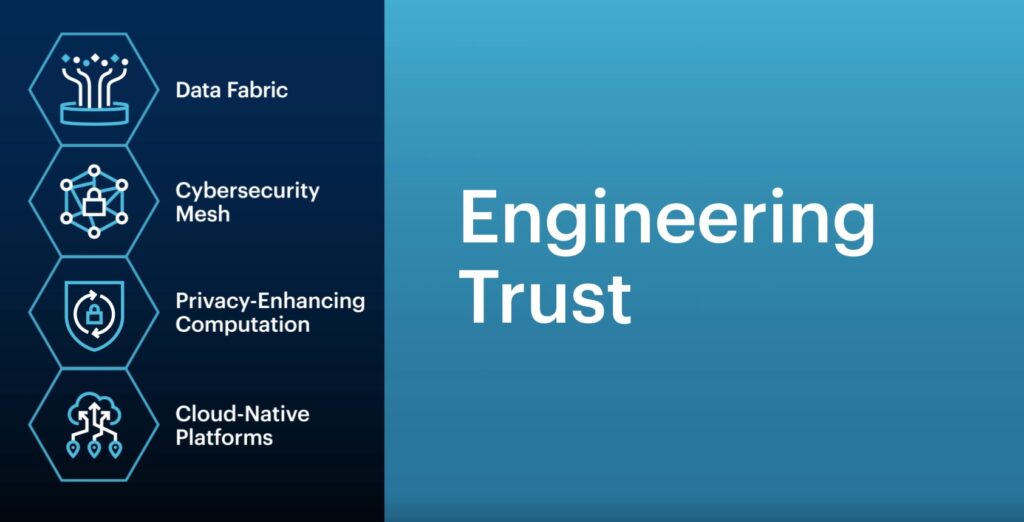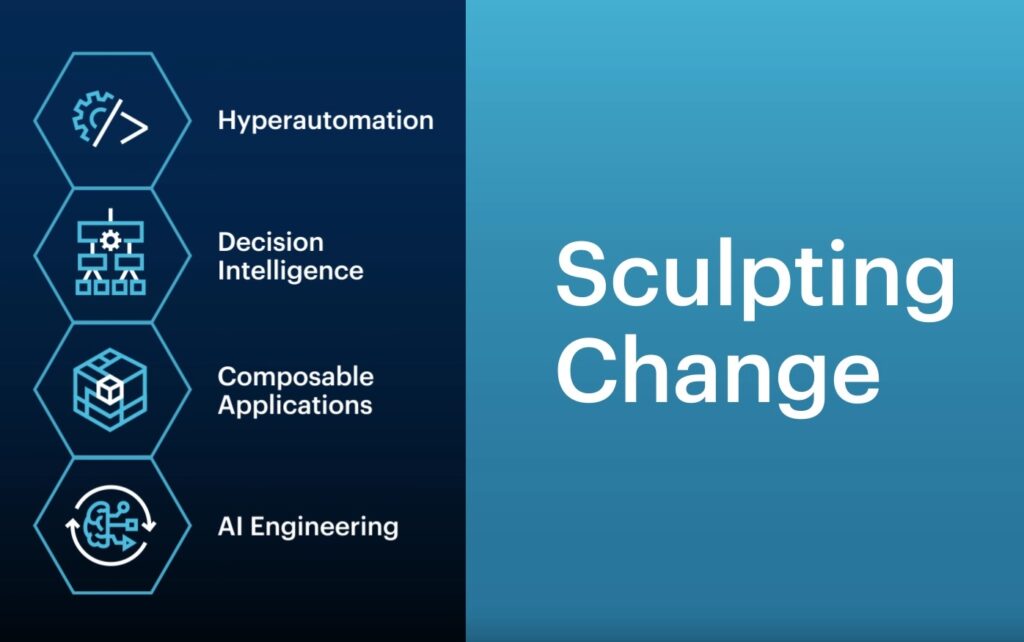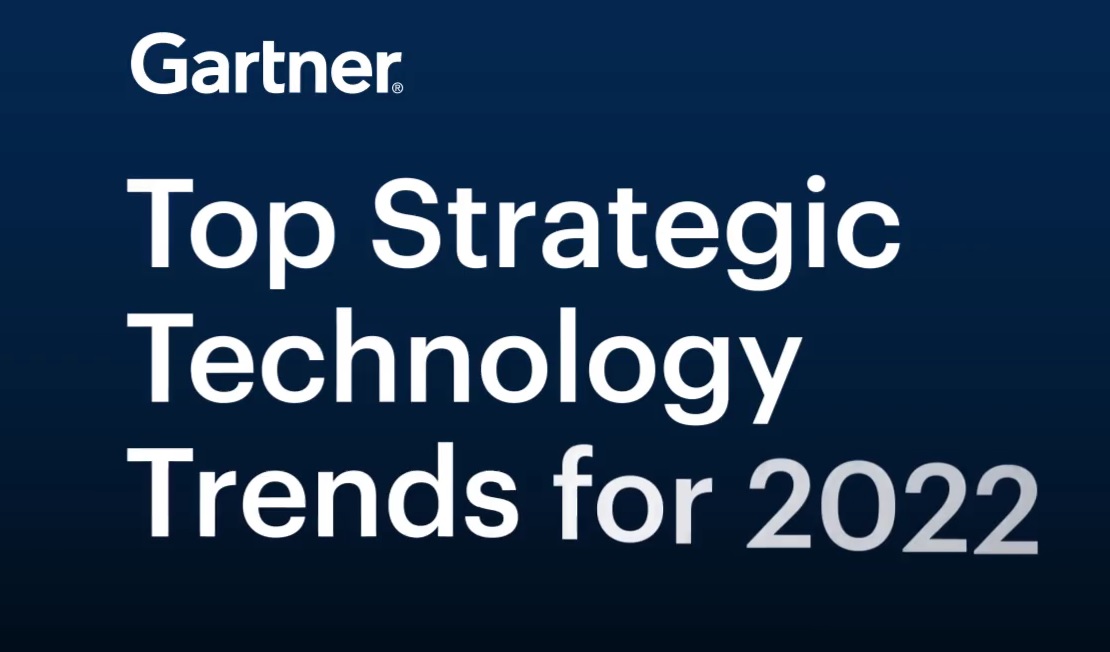Top Strategic Technology Trends for 2022, according to Gartner. Gartner IT Symposium/Xpo 2021 Americas, October 18-21, also included analysts exploring industry trends. Gartner, Inc earlier this month highlighted the top strategic technology trends that businesses should be looking for in 2022. During the Gartner IT Symposium/Xpo Americas, analysts presented their findings.
“With CEOs and Boards striving to find growth through direct digital connections with customers, CIOs’ priorities must reflect the same business imperatives, which run through each of Gartner’s top strategic tech trends for 2022,” said David Groombridge, research vice president at Gartner.
“CIOs must find the IT force multipliers to enable growth and innovation, and create scalable, resilient technical foundations whose scalability will free cash for digital investments. These imperatives form the three themes of this year’s trends: engineering trust, sculpting change and accelerating growth.”
[email-subscribers-form id=”1″]

Top strategic technology trends for 2022:
Generative Artificial Intelligence (AI):
Generative AI — machine learning algorithms that learn about the content or things from their data and use it to build brand-new, entirely unique, realistic artifacts – is one of the most obvious and powerful AI strategies on the horizon.
Generative AI can be used for a variety of purposes, including writing software code, facilitating medication research, and targeted marketing, but it can also be used for scams, fraud, political disinformation, fake identities, and other illegal acts. According to Gartner, generative AI will account for 10% of all data produced by 2025, up from less than 1% currently.
Data Fabric
In the previous decade, the number of data and application silos has increased, but the number of experienced employees in data and analytics (D&A) teams has remained stable or even decreased. Data fabrics – a scalable architecture that reduces the technical debt seen in most D&A teams due to rising integration challenges – have emerged to simplify an organization’s data integration infrastructure and create a scalable architecture that reduces the technical debt seen in most D&A teams due to rising integration challenges.
The actual benefit of data fabric is its capacity to use inbuilt analytics to dynamically improve data consumption, reducing data management efforts by up to 70% and speeding time to value.

Distributed Enterprise
Traditional office-centric firms are developing into distributed enterprises with geographically scattered personnel, thanks to the rise of remote and hybrid working practices.
“This requires CIOs to make major technical and service changes to deliver frictionless work experiences, but there is another side to this coin: the impact on business models,” said Groombridge. “For every organization, from retail to education, their delivery model has to be reconfigured to embrace distributed services. The world didn’t think they’d be trying on clothes in a digital dressing room two years ago.”
According to Gartner, 75 percent of companies who take advantage of distributed business benefits will see revenue growth 25 percent quicker than their competitors by 2023.
Cloud-Native Platforms (CNPs)
Enterprises must move away from traditional “lift and shift” migrations and toward CNPs in order to truly deliver digital capabilities wherever and everywhere. CNPs employ cloud computing’s basic features to offer scalable and elastic IT-related capabilities “as a service” to technology innovators who use internet technologies, resulting in faster time to value and lower costs.
As a result, Gartner forecasts that cloud-native platforms would power more than 95 percent of new digital efforts by 2025, up from less than 40 percent in 2021.

Autonomic Systems
Traditional programming or simple automation will not scale as businesses grow. Self-managing physical or software systems that learn from their surroundings are known as autonomous systems. Autonomic systems, unlike automated or even autonomous systems, may dynamically adjust their own algorithms without requiring an external software update, allowing them to adapt to changing conditions in the field as quickly as people.
“Autonomic behavior has already made itself known through recent deployments in complex security environments, but in the longer term, will become common in physical systems such as robots, drones, manufacturing machines and smart spaces,” said Groombridge.
Decision Intelligence (DI)
The ability of an organization to make decisions can be a substantial source of competitive advantage, but it is growing more difficult.
Decision intelligence is a practical field that focuses on clearly understanding and engineering how decisions are made, as well as how results are evaluated, controlled, and improved through feedback. According to Gartner, a third of major firms will use decision intelligence for structured decision-making in the next two years to strengthen their competitive advantage.

Composable Applications
The necessity for business adaptability in today’s constantly changing business environment drives enterprises toward a technological architecture that facilitates rapid, safe, and efficient application change. Composable application architecture enables such adaptability, and companies that use it will outperform their competitors by 80 percent in terms of new feature implementation speed.
“In turbulent times, composable business principles help organizations master the accelerated change that is essential for business resilience and growth. Without it, modern organizations risk losing their market momentum and customer loyalty,” said Groombridge.
Hyperautomation
By swiftly identifying, evaluating, and automating as many procedures as possible, hyper-automation promotes accelerated growth and company resiliency.
“Gartner research shows that the top-performing hyperautomation teams focus on three key priorities: improving the quality of work, speeding up business processes, and enhancing the agility of decision-making,” said Groombridge. “Business technologists supported an average of 4.2 automation initiatives in the past year, too.”
Privacy-Enhancing Computation (PEC)
CIOs must avoid any loss of customer trust as a result of privacy incidents, in addition to dealing with evolving worldwide privacy and data protection legislation. As a result, Gartner predicts that by 2025, 60% of big enterprises would utilize one or more privacy-enhancing compute techniques.
PEC approaches, which safeguard personal and sensitive data at the data, software, and hardware levels, allow data to be safely shared, pooled, and analyzed without jeopardizing its confidentiality or privacy. Many sectors, as well as public cloud infrastructures, have current use cases (e.g., trusted execution environments).
Cybersecurity Mesh
“Data is strung throughout many of this year’s trends, but it is only useful if enterprises can trust it,” said Groombridge. “Today, assets and users can be anywhere, meaning the traditional security perimeter is gone. This requires a cybersecurity mesh architecture (CSMA).”
CSMA aids in the creation of an integrated security structure and posture to protect all assets, regardless of their location. Organizations who use a CSMA to integrate security solutions into a cooperative ecosystem by 2024 will minimize the financial effect of individual security incidents by 90% on average.
AI Engineering
IT leaders struggle to incorporate AI into applications, squandering time and money on AI projects that never go live, or battling to maintain the value of AI solutions once they have been published. AI engineering is a holistic approach to putting AI models into action.
“For fusion teams working on AI, the real differentiator for their organizations will lie in their ability to continually enhance value through rapid AI change,” said Groombridge. “By 2025, the 10% of enterprises that establish AI engineering best practices will generate at least three times more value from their AI efforts than the 90% of enterprises that do not.”
Total Experience (TX)
The customer experience (CX), employee experience (EX), user experience (UX), and multi-experience (MX) are all aspects of TX (MX). TX’s mission is to increase customer and employee trust, satisfaction, loyalty, and advocacy. Adaptive and resilient TX business outcomes will improve sales and profit for businesses.
The top strategic technology trends for this year are those that will cause substantial disruption and opportunities in the next five to ten years. More information is available in Gartner’s “Top Strategic Technology Trends for 2022.” In the accompanying Gartner e-book, learn more about this year’s trends.
About Gartner IT Symposium/Xpo
Gartner IT Symposium/Xpo 2021 is the world’s most important gathering for CIOs and other IT executives. IT executives rely on these conferences to gain insight into how their organizations can use IT to overcome business challenges and improve operational efficiency. Follow news, photos, and video coming from Gartner IT Symposium/Xpo on the Gartner Newsroom, Smarter With Gartner, on Twitter using #GartnerSYM, Instagram, Facebook and LinkedIn.

